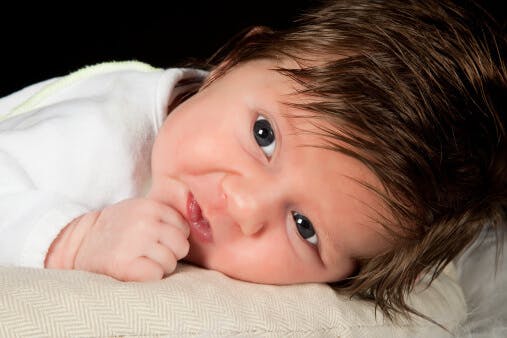Is That a Real Smile or Gas?

Around the same time as the peak of the fussy period, most babies start to have a real, joyful, social smile. Again, we see the balance of parenting.
By now, babies are clearly tuned in socially. They have started to become fascinated with their own hands, staring at them as they slowly turn them over. But the human face remains more fascinating than anything else. This is especially true of their parents’ faces.
Babies can already recognize their parents on videotape and determine if the voice and video are just a bit out of synch. They also tend to respond differently when they see their mothers (comforted and calm) and when they see their fathers (perky and playful). (When they see strangers, they go from bright-eyed to bored.) They react differently if you are smiling or frowning.
Your baby has learned to try to get your attention with gurgles, coos, and body movements. Now she is able to reward you with a genuine smile when you connect in a way that brings her delight. You can recognize these smiles because the cheeks rise (called a Duchenne smile) or the mouth opens (an open-mouth smile); in moments of sheer joy, the mouth opens and the cheeks rise.
Smiles may not be frequent yet, but once you’ve experienced your baby smiling at you, you will be motivated to learn all the ways you can make her do it again. And she will be busy learning how to make you smile.
Yes, this is the fussy phase, but it is also the dawning of days of delight.
This is an excerpt from: From First Kicks to First Steps: Nurturing Your Babys Development from Pregnancy Through the First Year of Life, McGraw-Hill, 2004, pp. 238 . 239


